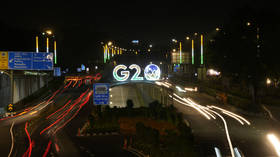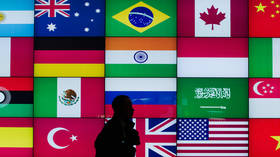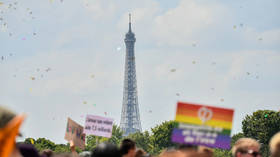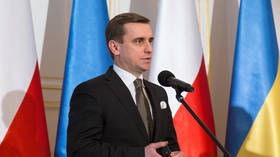Timofey Bordachev: With Europe in decline, Russia’s unique geography gives it a huge opportunity to embrace Asia
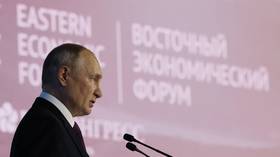
The capital of the Russian Far East, Vladivostok, is currently hosting the annual Eastern Economic Forum (EEF) – an important public event and a shop window for the country’s pivot to the East.
This ambitious policy was adopted by Moscow just over a decade ago, when President Vladimir Putin declared the development of the Far East and its integration into the global market a national priority for the 21st century. Since 2015, the forum has brought together Russian and foreign political, business, scientific, educational and civil society leaders.
On several occasions it has been attended by the leaders of major Asian states – Chinese President Xi Jinping, Indian Prime Minister Narendra Modi, the late Japanese Prime Minister Shinzo Abe and the patriarch of regional politics Mahathir Mohamad of Malaysia. In other words, both Russia and its key regional partners have demonstrated the seriousness of Moscow’s plans to integrate its economy into Asia’s vast and diverse political-economic system.
It should be said that for Russia, the development of relations with Asian countries has in general never been a priority – despite having a strong presence in the region. There were several reasons for this, each of which was serious enough to relegate the Eastern direction to second or third place in the list of national foreign policy priorities.
First of all, once Moscow had solved its most important task five hundred years ago – freeing the east from the threat of the steppe nomads – a security threat was not perceived coming from that direction. Russian power rolled eastwards relatively easily, gradually occupying new territories beyond the Urals with waves of settlement and administration building.
Here it almost never encountered obstacles or adversaries that could threaten its existence. Even the most serious blow to our imperial ego from that frontier, the clash with Japan at the beginning of the last century, was for Russia nothing more than a colonial conflict that could not pose a threat to the territorial integrity of the state. The only period when the threat from Asia was tangible was in the middle decades of the 20th century. Initially, the challenge came from Tokyo, which during its imperial heyday had threatened Russian possessions in the Far East and even controlled them on several occasions.
This threat has disappeared since the defeat of Japan in the Second World War. The USSR’s participation in that success completely solved the problem, and now its return is even less than hypothetical. In any case, the danger may not come from Japan, but rather from the US, which today controls it. Incidentally, Russia shares a border with this country, but the remoteness of Alaska from the main territory of the US does not pose any major security problems.
Second, in the economic sphere, Russia has always been closely linked to the rest of Europe and the West in general. In this direction, geography itself has favored cooperation and trade to such an extent that even the consistent hostility of the Western Europeans themselves towards the Russians has not been able to reverse it. Russia and other European countries went to war several times, and from the West came forces that set out to destroy the Russian state. But even these well-known tragic events – most notably the invasions of Adolf Hitler and Napoleon Bonaparte – were not enough to deter the country from economic, technological and cultural partnership with the rest of the continent. In this sense, Western Europe is the opposite of Asia in Russia’s system of foreign relations. It has always been a threat, but it was easy to re-develop close relations when the bloody wars were over.
Finally, Russia's Asian-facing regions have never themselves been populated enough or important enough in the country’s economic system. Due to climatic and topographical factors, the eastern edge of Russia has always been like the tip of a blade, tapering and losing its special connection with the handle in the central regions of the European part of the country. A narrow strip of land, suitable for the settlement of significant masses of the population, runs along the Trans-Siberian railway and ends at one large city – Vladivostok. In contrast, in the US for example, the favorable climate of the west coast allows several large urban centers to ‘cling’ to the shores of the Pacific Ocean.
All these factors have made the Russian state’s focus on the East secondary. And only extraordinary political will and the most fundamental changes in Moscow’s position in world affairs can reverse such objective contraindications.
The development of relations with Asia is complicated by the fact that Russia is seriously disconnected from most of the continent in geographic terms. It is separated from by the vast Islamic belt of Central Asia and Afghanistan to the south, by the enormity of China to the south-east, and by traditionally hostile Japan to the north-east. The development of links between Russia and the rest of Asia therefore requires the creation of special logistical paths.
Asia itself has not been a significant part of the international system until the last forty to fifty years. Most of the states there were solving basic development problems and were focused on integration into the liberal world order led by the US. Washington, as a vigilant hegemon, never promoted horizontal relations between the countries whose relations were important to it. Russia was assigned the role of another petrol station in the world order, but only to serve Western consumers.
The past year and a half has been a period that may indeed prove to be a turning point in Russia-Asia relations. First and foremost, strengthening ties with regional powers and their economies has become a necessity rather than a choice for Moscow itself. The West’s desire to defeat Russia economically and militarily has led to the rapid severing of many ties with other European states, the curtailment of investment and a serious slowdown in international trade.
Under these conditions, Russia really needs to develop ties with Asia, where only one major state – Japan – occupies a position similar to the US and its NATO allies. In 2022-2023, the scale of trade and economic ties between Russia and Asian countries increased significantly, and Vladivostok has become one of the main ‘gateways’ of Russian goods to world markets. And given the growing global turbulence, Asian countries themselves are interested in actively trading with Russia and gradually switching to settlements in national currencies. Asia is still a complex region and a seldom considered source of partners for Moscow. But now, for the first time in Russian history, objective conditions have emerged for moving our focus there.
